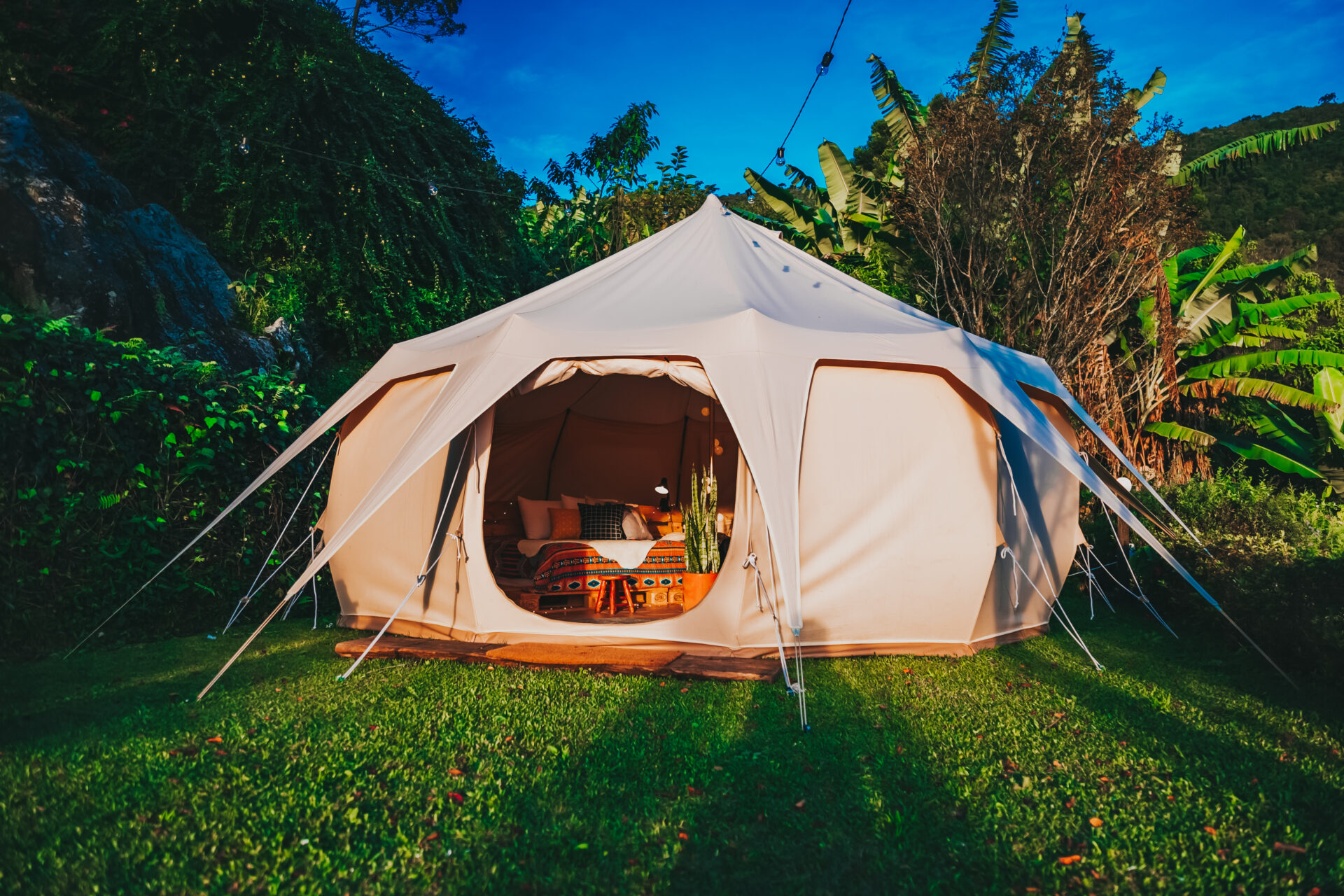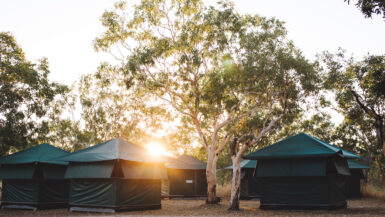The Philippines is a tropical paradise known for its stunning beaches, lush rainforests, and diverse wildlife. It’s no wonder that camping is a popular activity among both locals and tourists. However, with the increasing concern for the environment, it’s important to choose eco-friendly camping sites that promote sustainable tourism. In this article, we will be exploring the best eco-friendly camping sites in the Philippines that offer a unique and unforgettable experience while minimizing the negative impact on the environment. From sleeping under the stars in a bamboo hut to exploring the hidden gems of the rainforest, these camping sites are perfect for nature lovers who want to connect with the natural beauty of the Philippines in a responsible way.
Introduction to Eco-Friendly Camping
Camping is a great way to escape the hustle and bustle of the city and immerse yourself in nature. However, camping can also have a negative impact on the environment if not done responsibly. This is where eco-friendly camping comes in. Eco-friendly camping is a sustainable and responsible way of camping that minimizes the impact on the environment while still allowing you to enjoy the beauty of nature.
Eco-friendly camping involves using environmentally friendly practices such as using biodegradable products, minimizing waste, and respecting the natural habitat. It also involves supporting local communities and preserving the natural resources of the area.
In the Philippines, there are several eco-friendly camping sites that offer a unique and sustainable camping experience. These sites not only offer breathtaking views and outdoor activities but also prioritize conservation and preservation of the environment. In this article, we will explore the top eco-friendly camping sites in the Philippines and the benefits of eco-friendly camping for the environment and local communities.
Importance of Eco-Friendly Camping
Eco-friendly camping is not just a trend, but a necessity in today’s world. With the increasing concern about the impact of human activities on the environment, it is important to adopt sustainable practices in all aspects of our lives, including camping.
Camping can have a significant impact on the environment if not done responsibly. For instance, the use of non-biodegradable products, littering, and damaging natural habitats can lead to pollution, habitat destruction, and loss of biodiversity. Eco-friendly camping seeks to minimize these negative impacts and promote environmental sustainability.
Eco-friendly camping also has a positive impact on local communities. By supporting eco-friendly camping sites, you are contributing to the local economy and helping to preserve the culture and heritage of the area. Many eco-friendly camping sites work closely with local communities to promote sustainable tourism and provide employment opportunities.
Furthermore, eco-friendly camping offers a unique and rewarding experience for campers. It allows you to connect with nature, learn about the local environment and culture, and appreciate the beauty of the natural world.
Overall, eco-friendly camping is an important step towards promoting sustainability and responsible tourism. It allows us to enjoy the benefits of camping while minimizing the negative impact on the environment and supporting local communities.
Top Eco-Friendly Camping Sites in the Philippines
The Philippines is home to some of the most beautiful and diverse natural landscapes in the world, making it an ideal destination for eco-friendly camping. Here are some of the top eco-friendly camping sites in the Philippines:
1. Masungi Georeserve
Located in Baras, Rizal, Masungi Georeserve is a conservation area that offers a unique camping experience. The site features a network of trails, limestone formations, and a hanging bridge that provides stunning views of the surrounding landscape. Masungi Georeserve also offers eco-cabins that are made of sustainable materials and equipped with solar-powered lighting and composting toilets.
2. Mount Purro Nature Reserve
Mount Purro Nature Reserve is a sustainable eco-tourism destination located in Antipolo City, Rizal. The site offers a range of eco-friendly accommodations, including glamping tents and treehouses. Mount Purro Nature Reserve also has a variety of activities such as hiking, kayaking, and bird watching.
3. Apo Island
Apo Island is a marine sanctuary located in Negros Oriental. The island offers several eco-friendly camping sites that are powered by solar energy and equipped with composting toilets. Apo Island is also known for its rich marine biodiversity, making it a popular spot for snorkeling and diving.
4. Danjugan Island
Danjugan Island is a marine and wildlife sanctuary located in Negros Occidental. The island features several eco-cabins that are made of sustainable materials and powered by solar energy. Danjugan Island is a haven for wildlife enthusiasts, offering opportunities to spot rare species such as pygmy seahorses and sea turtles.
These eco-friendly camping sites in the Philippines offer a unique and sustainable way of experiencing the natural beauty of the country. They prioritize conservation and sustainability while providing a range of activities and amenities for campers to enjoy.
Features and Amenities of Eco-Friendly Camping Sites
Eco-friendly camping sites offer a range of features and amenities that prioritize sustainability and conservation while still providing a comfortable and enjoyable camping experience. Here are some of the common features and amenities of eco-friendly camping sites:
Sustainable Accommodations
Eco-friendly camping sites often offer accommodations that are made of sustainable materials and powered by renewable energy sources such as solar power. Some sites also offer unique accommodations like glamping tents, treehouses, or eco-cabins.
Composting Toilets
Composting toilets are a sustainable alternative to traditional toilets that use water and require a septic system. Composting toilets use natural processes to break down waste into compost, which can then be used as fertilizer.
Organic Gardens
Many eco-friendly camping sites have organic gardens where they grow their own fruits and vegetables. This helps to reduce the carbon footprint of the site by minimizing the transportation of food and supports sustainable agriculture practices.
Waste Management
Eco-friendly camping sites have effective waste management systems that prioritize reducing, reusing, and recycling waste. They also encourage campers to minimize their waste and provide composting and recycling bins.
Outdoor Activities
Eco-friendly camping sites offer a range of outdoor activities that allow campers to enjoy the natural beauty of the area. These activities may include hiking, kayaking, bird watching, and snorkeling.
Education and Interpretation
Many eco-friendly camping sites provide education and interpretation programs to promote environmental awareness and sustainability. These programs may include guided hikes, workshops, and talks about the local environment and culture.
Overall, eco-friendly camping sites prioritize sustainability and conservation while still providing a comfortable and enjoyable camping experience. They offer a range of features and amenities that promote responsible tourism and support local communities.
Activities and Attractions in Eco-Friendly Camping Sites
Eco-friendly camping sites offer a range of activities and attractions that allow campers to immerse themselves in the natural beauty of the area. Here are some of the common activities and attractions in eco-friendly camping sites:
Hiking and Trekking
Many eco-friendly camping sites offer hiking and trekking trails through forests, mountains, and other natural landscapes. These trails provide stunning views and opportunities to spot wildlife and rare plant species.
Water Activities
Eco-friendly camping sites located near bodies of water offer a range of water activities such as kayaking, swimming, snorkeling, and diving. These activities allow campers to explore the marine ecosystem and appreciate the beauty of the underwater world.
Bird Watching
Eco-friendly camping sites that are located in or near bird sanctuaries offer opportunities for bird watching. These sites may have guided bird watching tours or provide information about the local bird species.
Cultural Immersion
Many eco-friendly camping sites offer cultural immersion activities that allow campers to learn about the local culture and heritage. These activities may include visits to local communities, cultural shows, and workshops on traditional arts and crafts.
Stargazing
Eco-friendly camping sites that are located in areas with low light pollution offer opportunities for stargazing. These sites may have telescopes or provide information about the constellations and celestial events.
Overall, eco-friendly camping sites offer a range of activities and attractions that allow campers to connect with nature and appreciate the beauty of the natural world. These activities promote environmental awareness and support sustainable tourism.
Tips for Eco-Friendly Camping
Eco-friendly camping is not only about choosing the right camping site, but also about adopting sustainable practices while camping. Here are some tips to help you camp in an environmentally responsible way:
Use Biodegradable Products
Choose biodegradable products such as soap, shampoo, and toothpaste to minimize the impact on the environment. Avoid using single-use plastics and bring reusable containers for food and water.
Minimize Waste
Pack only what you need and avoid disposable items such as paper plates and plastic utensils. Bring reusable bags for trash and separate recyclable materials from non-recyclable materials.
Respect the Natural Habitat
Avoid damaging natural habitats by staying on designated trails and avoiding fragile ecosystems. Do not disturb wildlife or remove any rocks or plants from the area.
Conserve Water and Energy
Use water sparingly and avoid leaving taps or showers running. Use energy-efficient lighting and minimize the use of electronic devices.
Support Local Communities
Choose eco-friendly camping sites that support local communities and use products and services from the local area. Respect local customs and traditions and learn about the local culture.
By following these tips, you can minimize your impact on the environment and support sustainable tourism. Eco-friendly camping is not only about enjoying the natural beauty of the area, but also about preserving it for future generations to enjoy.
Sustainable Practices in Eco-Friendly Camping
Eco-friendly camping is all about adopting sustainable practices that minimize the impact on the environment and support sustainable tourism. Here are some sustainable practices to consider when eco-friendly camping:
Leave No Trace
The Leave No Trace principle is a set of guidelines that encourage campers to minimize their impact on the environment. This involves packing out all trash, avoiding damaging vegetation, and minimizing campfire impact.
Support Local Communities
Choose eco-friendly camping sites that support local communities and use products and services from the local area. This helps to support the local economy and preserve the culture and heritage of the area.
Conserve Water and Energy
Use water sparingly and avoid leaving taps or showers running. Use energy-efficient lighting and minimize the use of electronic devices.
Choose Sustainable Products
Choose products that are made of sustainable materials and avoid single-use plastics. Bring reusable containers for food and water and use biodegradable products such as soap and shampoo.
Reduce, Reuse, and Recycle
Minimize waste by packing only what you need and avoiding disposable items such as paper plates and plastic utensils. Bring reusable bags for trash and separate recyclable materials from non-recyclable materials.
By adopting these sustainable practices, you can minimize your impact on the environment and support sustainable tourism. Eco-friendly camping is not only about enjoying the natural beauty of the area, but also about preserving it for future generations to enjoy.
Benefits of Eco-Friendly Camping for the Environment and Local Communities
Camping is one of the most popular outdoor activities in the Philippines, and it provides a great opportunity to connect with nature. However, traditional camping practices can have a negative impact on the environment and local communities. This is why eco-friendly camping has become increasingly popular in recent years. Here are some of the benefits of eco-friendly camping for the environment and local communities:
Preserves natural resources
Eco-friendly camping sites are designed to minimize the impact on the environment. They use sustainable practices such as composting toilets, rainwater harvesting, and renewable energy sources. By reducing the use of natural resources, eco-friendly camping helps to preserve the environment for future generations.
Reduces waste and pollution
Traditional camping practices often involve the use of disposable products such as plastic utensils and paper plates. These items can create a significant amount of waste and pollution. Eco-friendly camping sites encourage the use of reusable products and recycling. This helps to reduce waste and pollution, and protect the environment.
Supports local communities
Eco-friendly camping sites often work with local communities to promote sustainable tourism. This helps to create jobs and economic opportunities for local people. By supporting local businesses and communities, eco-friendly camping helps to preserve cultural heritage and promote sustainable development.
Provides a unique experience
Eco-friendly camping provides a unique experience that allows people to connect with nature in a meaningful way. By staying in an eco-friendly camping site, people can learn about sustainable practices and gain a deeper understanding of the environment. This can lead to a greater appreciation for nature and a desire to protect it.
In conclusion, eco-friendly camping provides many benefits for the environment and local communities. By using sustainable practices, reducing waste and pollution, supporting local communities, and providing a unique experience, eco-friendly camping helps to promote sustainable tourism and protect the environment.
Challenges and Opportunities for Eco-Friendly Camping in the Philippines
Eco-friendly camping in the Philippines faces both challenges and opportunities. While there is a growing demand for sustainable tourism, there are also several obstacles that need to be addressed. Here are some of the challenges and opportunities for eco-friendly camping in the Philippines:
Challenges
Lack of awareness and education
One of the biggest challenges for eco-friendly camping in the Philippines is the lack of awareness and education. Many people are still unaware of the impact of traditional camping practices on the environment and local communities. There is a need for more education and awareness campaigns to promote eco-friendly camping.
Limited infrastructure
Another challenge is the limited infrastructure for eco-friendly camping. While there are some eco-friendly camping sites in the Philippines, many areas lack the necessary infrastructure to support sustainable tourism. This includes facilities for waste management, renewable energy sources, and water conservation.
Resistance to change
Some people may be resistant to change and reluctant to adopt eco-friendly camping practices. This can be due to a lack of understanding or a belief that traditional camping practices are sufficient. Overcoming resistance to change will require education and awareness campaigns, as well as incentives for eco-friendly camping.
Opportunities
Increasing demand for sustainable tourism
One of the biggest opportunities for eco-friendly camping in the Philippines is the increasing demand for sustainable tourism. More and more people are becoming aware of the impact of their travel on the environment and local communities. This creates an opportunity for eco-friendly camping sites to attract visitors who are looking for a more sustainable travel experience.
Collaboration with local communities
Eco-friendly camping sites can collaborate with local communities to promote sustainable tourism. This can help to create jobs and economic opportunities for local people. By working with local communities, eco-friendly camping sites can also promote cultural heritage and preserve the environment.
Government support
The Philippine government has recognized the importance of sustainable tourism and has taken steps to promote eco-friendly practices. This includes the implementation of sustainable tourism policies and the provision of incentives for sustainable tourism. Government support can help to create a favorable environment for eco-friendly camping in the Philippines.
Overall, eco-friendly camping in the Philippines faces challenges and opportunities. By addressing challenges such as lack of awareness and education, limited infrastructure, and resistance to change, eco-friendly camping sites can take advantage of the growing demand for sustainable tourism and collaborate with local communities to promote sustainable development.





Leave a reply